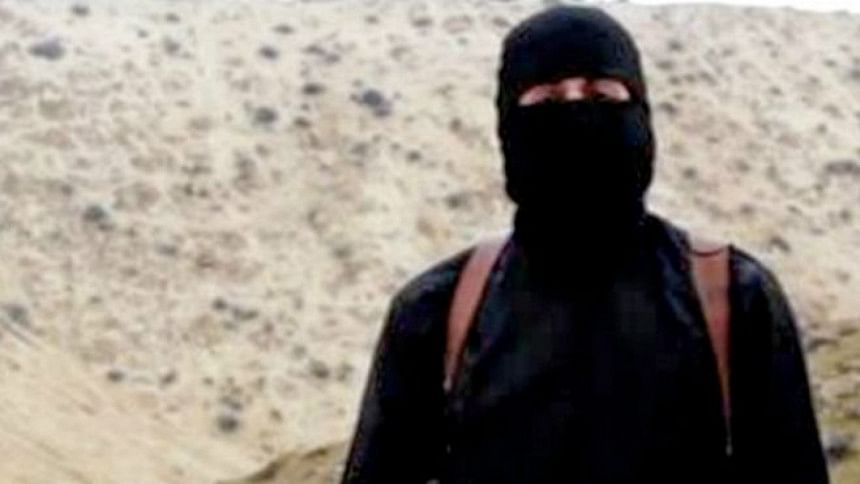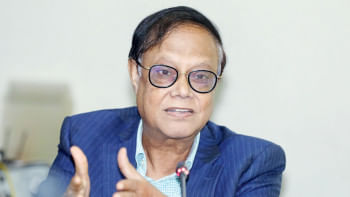IS militant 'Jihadi John' named as Mohammed Emwazi from London

The masked Islamic State militant known as Jihadi John, who has been pictured in the videos of the beheadings of Western hostages, has been named.
He is Mohammed Emwazi, a Kuwaiti-born British man in his mid-20s from west London, who was previously known to British security services.
They chose not to disclose his name earlier for operational reasons.
Emwazi first appeared in a video last August, when he apparently killed the American journalist James Foley.
He was later thought to have been pictured in the videos of the beheadings of US journalist Steven Sotloff, British aid worker David Haines, British taxi driver Alan Henning, and American aid worker Abdul-Rahman Kassig, also known as Peter.
The Beatles
In each of the videos, the militant appeared dressed in a black robe with a black balaclava covering all but his eyes and top of his nose.
Speaking with a British accent, he taunted Western powers before holding his knife to the hostages' necks, appearing to start cutting before the film stopped. The victims' decapitated bodies were then shown.
Earlier this month, the militant featured in a video in which the Japanese journalist Kenji Goto appeared to be beheaded.
Hostages released by IS said he was one of three British jihadists guarding Westerners abducted by the group in Syria. They were known collectively as the Beatles.
Emwazi is understood to be about 27 years of age.
Friends told the Washington Post that he was raised in a middle class area of West London and studied computer programming at the University of Westminster. He would on occasion pray at a mosque in Greenwich, they said.
The university confirmed Emwazi had left six years ago, adding: If these allegations are true, we are shocked and sickened.
Emwazi's friends told the Washington Post they believed he started to be radicalised after travelling to Tanzania in May 2009 following his graduation.
He and two friends had planned to go on a safari, but once they landed in Dar es Salaam, they were detained by police and held overnight, they said.
Emwazi then ended up flying to Amsterdam, in the Netherlands, where he claimed to be met by British intelligence agents from MI5 who accused him of trying to travel to Somalia, where the jihadist group al-Shabab operates. He denied the accusation and said the agents had tried to recruit him before allowing him to return to the UK.
The incident is apparently described in a report published the following year by the Independent. It identified Emwazi as Muhammad ibn Muazzam.
Live investigation
Emwazi later moved to Kuwait, where he got a job at a computer company. But on a visit to London in 2010, he was detained by British counter-terrorism officials and prevented from flying back to Kuwait, his friends said.
It is believed he was known to security services in the UK and the US before leaving for Syria and was linked to a man with connections to al-Shabab, says the BBC's Dominic Casciani.
"I had a job waiting for me and marriage to get started," Emwazi wrote in a June 2010 email.
"[But now] I feel like a prisoner, only not in a cage, in London," he added, "a person imprisoned and controlled by security service men, stopping me from living my new life in my birthplace and country, Kuwait."
The Washington Post said Emwazi was believed to have travelled to Syria around 2012 and later joined Islamic State, which has declared the creation of a caliphate in the large swathes of Syria and neighbouring Iraq it controls.
British police declined to comment on the reports, citing the "live counter-terrorism investigation".
A spokeswoman for Prime Minister David Cameron would not confirm or deny reports that Emwazi was Jihadi John, adding that the police and security services were working hard to find those responsible for the murder of the British hostages.
A White House spokeswoman referred journalists to the UK authorities.
The BBC's Rajini Vaidyanathan in Washington says the FBI went on record last September to confirm it knew who Jihadi John was. However, US officials said this month they would not name him as they believed this would be the best strategy for finding him and bringing him to justice.
The London-based International Centre for the Study of Radicalisation said it believed the identification to be accurate. It said that the naming of Emwazi showed that whatever efforts are made, the ability to mask one's identity is limited or in fact impossible.
Jihadi John sightings
· August 2014: Video in which US journalist James Foley is apparently beheaded
· 2 September 2014: Video in which US journalist Steve Sotloff is apparently beheaded
· 13 September 2014: Video in which British aid worker David Haines is apparently beheaded
· October 2014: Video in which British aid worker Alan Henning is apparently beheaded
· November 2014: Video in which Jihadi John is shown killing a Syrian soldier in a mass beheading, which also shows body of US aid worker Abdul-Rahman Kassig, also known as Peter Kassig
· 20 January 2015: Video in which Jihadi John is seen standing alongside two Japanese hostages and demanding a ransom in exchange for their release
· 31 January 2015: Video released appearing to show Jihadi John beheading Japanese hostage Kenji Goto

 For all latest news, follow The Daily Star's Google News channel.
For all latest news, follow The Daily Star's Google News channel. 



Comments